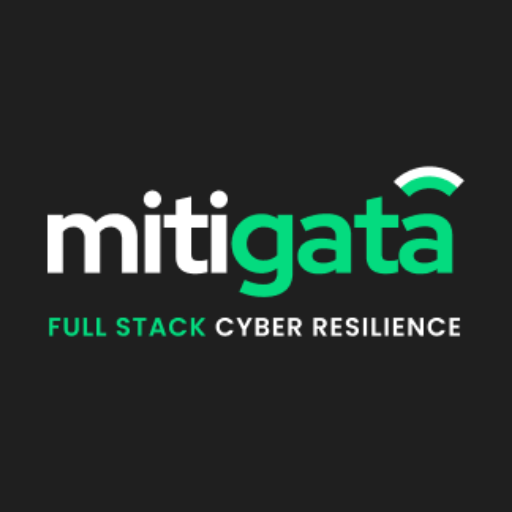According to the “Cost of a Data Breach Report,” it takes organisations 204 days on average just to detect a breach, and another 73 days to fix it, a total of 277 days from intrusion to control.
A skilled Security Operations Center analyst narrows that window dramatically by sifting through alerts, validating threats, and driving response.
In this article, you’ll see how SOC analysts make that difference, the specific contributions of analysts at various levels, and why SOCs are indispensable to cybersecurity resilience.
Why 800+ Businesses Trust Mitigata for AI-Powered SOC

Protect your business with Mitigata’s SOC-as-a-Service, giving you enterprise-grade security without the cost of an in-house team. With us, you get:
- 24/7 Threat Hunting & Dark Web Monitoring to catch risks before they escalate
- Automated Response with SOAR & UEBA to reduce manual work and alert fatigue
- AI-Powered Remediation for L1 & L2 Incidents, reducing costs by up to 30%
- Rapid Detection and Response with an average MTTD of under 15 minutes
- Centralised Dashboard & Reporting for complete visibility
Save up to 50% versus internal teams
Your Full Cyber Defence at Just ₹2,00,000/Month
800+ companies trust us to run their cybersecurity with our All-in-one SOC, which offers real-time monitoring and easy integration.

What Is a Security Operations Center (SOC)?
A Security Operations Center (SOC) is a dedicated team responsible for the ongoing surveillance and management of an organisation’s information security environment. The SOC acts as the center of the organisation, which includes receiving alerts, investigating incidents and responding to cyber threats to ensure they do not escalate. The SOC uses advanced monitoring technologies, such as SIEM (Security Information and Event Management), to collect information, look for patterns and analyse information from around the network. These tools indicate anomalous behaviour that may warrant investigation, and support a response if needed.Functions of a SOC typically include:
- Continuous monitoring of the network and systems
- Threat detection and triage
- Incident investigation and response
- Log analysis and correlation
- Support for compliance and audit
- Reporting and post-incident review
Are you counted among those 60% of GRC users who manage compliance manually? It’s high time to check these popular automated GRC tools in India
The Role of SOC in Cybersecurity Defence
The SOC is responsible for being the first line of defence in an organisation’s cyber defence architecture. SOC’s purpose is to reduce the time it takes to identify and restrain threats.- Continuous Monitoring for Threats: The SOC will monitor all endpoints, servers, and applications for illegal activities. When automated alerts are triggered, analysts will take the lead in distinguishing between real threats and false ones
- Incident Response: Once an attack is confirmed to be happening, the SOC manages the immediate response. Analysts will isolate infected devices, delete the infected files, and restore services to their normal state
- Threat Intelligence & Analysis: SOC teams receive multiple feeds of cyber threat intelligence to keep up with emerging new methods of attacks. This helps the SOC to build up knowledge and predict vulnerabilities before attackers do.
- Forensics and Root Cause Remediations: Once an incident has been taken care of, the SOC analyses how the breach occurred. This helps SOC teams to improve security controls and prevent those attack methods before they escalate.
- Compliance & Reporting: Organisations are frequently required to comply with various regulatory requirements, including GDPR, ISO 27001 and local cybersecurity laws. The SOC ensures that each incident is recorded accurately, and the team knows how to collect evidence and report back to meet the required compliance measures.
Your Full Cyber Defence at Just ₹2,00,000/Month
Access premium protection, fast onboarding, and easy SIEM integration. Let’s start with a free demo NOW.

Levels of SOC Analysts: L1, L2, and L3
There is a structured system within the SOC that organises the analysts into levels of responsibility and expertise. Each level represents the level of defence operations.
L1 SOC Analyst – First Alarm
L1 analysts are the initial responders to alerts from the security tools. Their duties consist of monitoring a number of dashboards, sorting the alerts, collecting the proof of incidents, and escalating confirmed incidents.
L1 analysts act as the first line of defence, filtering out false positives to ensure actual threats are detected and receive immediate attention.
L2 SOC Analyst – Investigation and Response
L2 SOC analysts take the investigation further from L1 SOC analysts to determine the validity of the alert. L2 SOC analysts decide what has occurred, assess the attack vector, and facilitate the incident response.
Their work involves detailed analysis of network traffic, logs, and user activity to understand the scope and impact of the incident.
L3 SOC Analyst – Incident Investigation and Forensics
L3 SOC analysts handle the most detailed and complex matters. They perform advanced threat hunting, reverse engineering of malware, and fine-tuning of detection tools.
L3 SOC analysts help in providing refined SOC processes to prevent future attacks.
Each level has a distinct role to perform to ensure no alerts go unreviewed and no incident goes undocumented.
Learn about the top cybersecurity threats shaping today’s digital landscape and how to protect your business from evolving attacks.
How a SOC Assists Your Organisation with Security and Workflow Continuity
Cyber resilience is an organisation’s ability to carry on, even with an active cyber incident. A well-structured Security Operations Center (SOC) will enhance this ability by minimising the frequency and impact of incidents. It helps an organisation with:
Early Detection and Quick Response – SOC teams continuously observe systems. Unusual activity is identified quickly, and action is taken before the threats escalate.
Taking action quickly can minimise damage during downtime and reduce the loss of critical assets, as well as financial and reputational damage.
Workflow Continuity – It helps organisations with the constant monitoring of their critical systems and keeps the sensitive data secure. Addressing any disruption through monitoring helps prevent incidents from disrupting daily workflow.
Cost-Effective – If an organisation is able to detect incidents early enough, the SOC can mitigate threats before the incident breach becomes an emergency.
Preventing downtime and data loss, along with reducing recovery time, will save the organisation a lot of money.
Regulatory Accountability – The SOC team constantly monitors and documents the incidents that occur and are fixed. This documentation reassures stakeholders that the security measures are actively being followed.
Better Visibility – SOC monitoring provides management with visibility into their security posture and can identify any potential weaknesses or emerging threats.
Having visibility into the organisation’s security helps management make better decisions in conducting business and investing resources.
Your Full Cyber Defence at Just ₹2,00,000/Month
Our SOC experts work 24/7, so you don’t have to invest in costly tools or in-house management teams.

Conclusion
A Security Operations Center protects your business when threats strike. SOC analysts at every level work together to catch attacks early, respond fast, and keep your operations running.
Let Mitigata protect your business around the clock with continuous AI-powered monitoring, rapid response, and threat insights tailored to your business environment.
With over 800 businesses trusting our expertise, we detect threats faster, respond smarter, and keep your operations secure without the complexity.
Contact Mitigata today for a free consultation!

